Issue #60: Reflections on Restaurants and Pork
Back in London, Wondering What's Best, Brining Pork Chops Before Grilling
One of the reasons I like traveling, especially traveling alone, is the opportunity it affords to reflect on what’s important to me. This trip to London has been no different, as you will see below. Thanks for indulging me. And while you do so, think about making an indulgent chop.
—Mitchell
I’m back in London. This time for the 20th anniversary of the World’s 50 Best Restaurants ceremony. For the most part, I’ve been keeping off the circuit of restaurants in contention for the award while eating my way around town. (Yes, it is a circuit—some would call it a circle jerk.) In addition to the local restaurants striving to make the list, chefs from all over the world are collaborating with local hosts to remind the gastronauts, who’ve descended on London for the celebration, that they exist and they are worthy.

In 2020, I resigned from my chair on the awards governing Academy. I’d been heading up the eastern North America region for a decade. Shortly after that, I resigned from the James Beard Foundation, too. As for so many people, the pandemic, the subsequent racial justice reckoning, and the devolution of progressive American democracy in the U.S. forced me to reflect on how I want to live my values, where I want to put my efforts, how I want to spend my time and money, and what I want to eat. And although I know that a tremendous amount of creativity and effort goes into the delivery of the so-called “best restaurants in the world,” and that the recognition provides motivation for incredibly hard work that can make or break a business, affecting livelihoods and other elements of the ecosystem, the process and the result no longer resonate with me the way they once did.
Having stopped going out to eat regularly, spending time in the country among farms and food co-ops, cooking all of our own meals, my focus on food has changed. I’ve always held that cooking bestows a unique kind of knowledge about food, embodied, timeless, and practical in a way that doesn’t come from reading or even eating. I don’t mean assembly-line restaurant cooking that has been decoupled from nourishment. I mean home cooking that connects you to people, not only those around you, but also those who came before.

While I’ve never been more obsessed with food, I’ve become more concerned about the intentionality of it, that is, the purpose and spirit with which it is cooked, the values with which the businesses that produce it are run. The world is literally on fire. (I’m in London during a historic heatwave that has smashed all records, but that wasn’t in the evening’s script. Nor was the fact that this event was originally scheduled to take place in Moscow.) We are more divided politically, socially, economically, culturally, and religiously than we have ever been in my lifetime. It just seems counterproductive to focus on things that divide us further into ranks of haves and have nots, of those who are on a list and those who are not, especially if the mechanism for creating those ranks, by the very nature of ranking itself, is systemically biased. (I will leave questions about diversity, inclusion and gender representation to others already writing about them and to future newsletters.)
A restaurant can operate with a variety of noble intentions—building community, contributing to a neighborhood, creating a supportive work environment, striving for diversity and inclusion, helping staff rise, practicing sustainability, respecting ingredients and those who produce them. Such work comes with rewards, not all of them financial, if not awards. But operating with the intention of being recognized as one of the best restaurants in the world—even if that recognition comes from one of these other more substantive pursuits—seems like a waste considering everything happening in the world right now. We all need to be thinking less about what people think of us and more about how the people around us are doing. No matter how much people want to insist things are back to “normal,” the world has changed. At a certain point this weekend I was overcome with the feeling that everyone on this circuit—cooks, journalists, and diners, alike—is dancing on the Titanic. (Read Alan Sytsma’s resonant Grub Street take here.)
I realize I am saying this after having written a doctoral dissertation about the importance of restaurant reviews and their influence on taste, after having spent 27 years working at the award-granting James Beard Foundation, and having sat on the World’s 50 Best Academy for so long. I also know it’s easier to see and to say from the sidelines. But that’s how I’ve come to understand that the effort and money and all of the intangible external costs—physical and mental health, family life, literal and figurative waste—it takes to win this sort of recognition are largely misspent. This is gastronomy as sport. It’s a game that can be played and sometimes won. But in the end it’s about power, access, influence, and money. It is not about people and food.
The Tao of Cooking
My deepening understanding of Taoism, through my tai chi practice and volunteer work for the Fung Loy Kok Institute of Taoism, has helped me realize the importance of intention, helped me to reprioritize. It’s one thing to move through the world in balance and harmony, doing things you believe to be right, caring for others, being sensitive to everything going on, not just now, but in the past and 1,000 years in the future, working with focus and intention, and with an appreciation of the process rather than result. Maybe while doing so you will be noticed, but that shouldn’t distract you from the work at hand. It’s another thing to strive to be noticed and to move through the world hoping someone pays attention to you. I’ve come to see this as a unique form of selfishness, but that’s also a subject for another time.
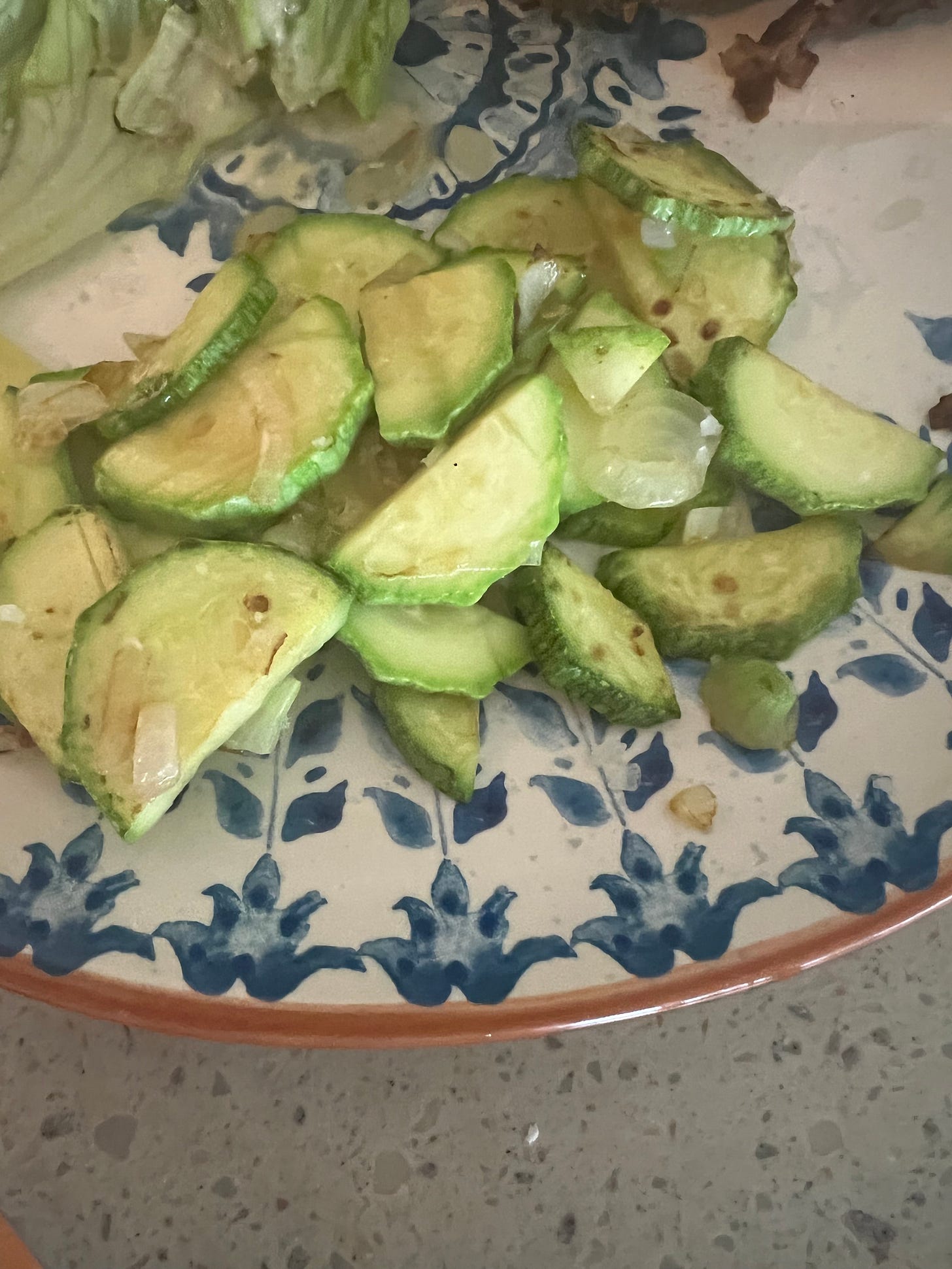
I will say that I don’t think everyone participating in this world of competitive fine dining—gastronomy as sport—is engaged in their work with impure intentions. But there is a point that I think may be inevitable at which one naturally begins to believe one actually has or might have the best restaurant in the world. That’s the same point at which the intention shifts, the focus changes, and everything falls out of balance.
I’m still here in London as I write, reflecting and sweating. But I come home with a lot to chew on.
Pork Parade
Speaking of chewing… (sorry, I had to #badsegue), while I’ve been eating my way around town, I can’t help but notice a British restaurant obsession for heirloom pork. I first saw Middle White pork indicated on the menu at St. John’s years ago. Now it’s everywhere. Other breeds, such as Tamworth and Saddleback, are prevalent, too. Middle White is a domestic breed that still seems to be most common. It is a cross, no surprise, between Large White and Small White pigs, that was first registered in 1852, and it is intended for eating fresh (that is, not cured or smoked). I’ve enjoyed a lot of it over the last few days. #notkosher
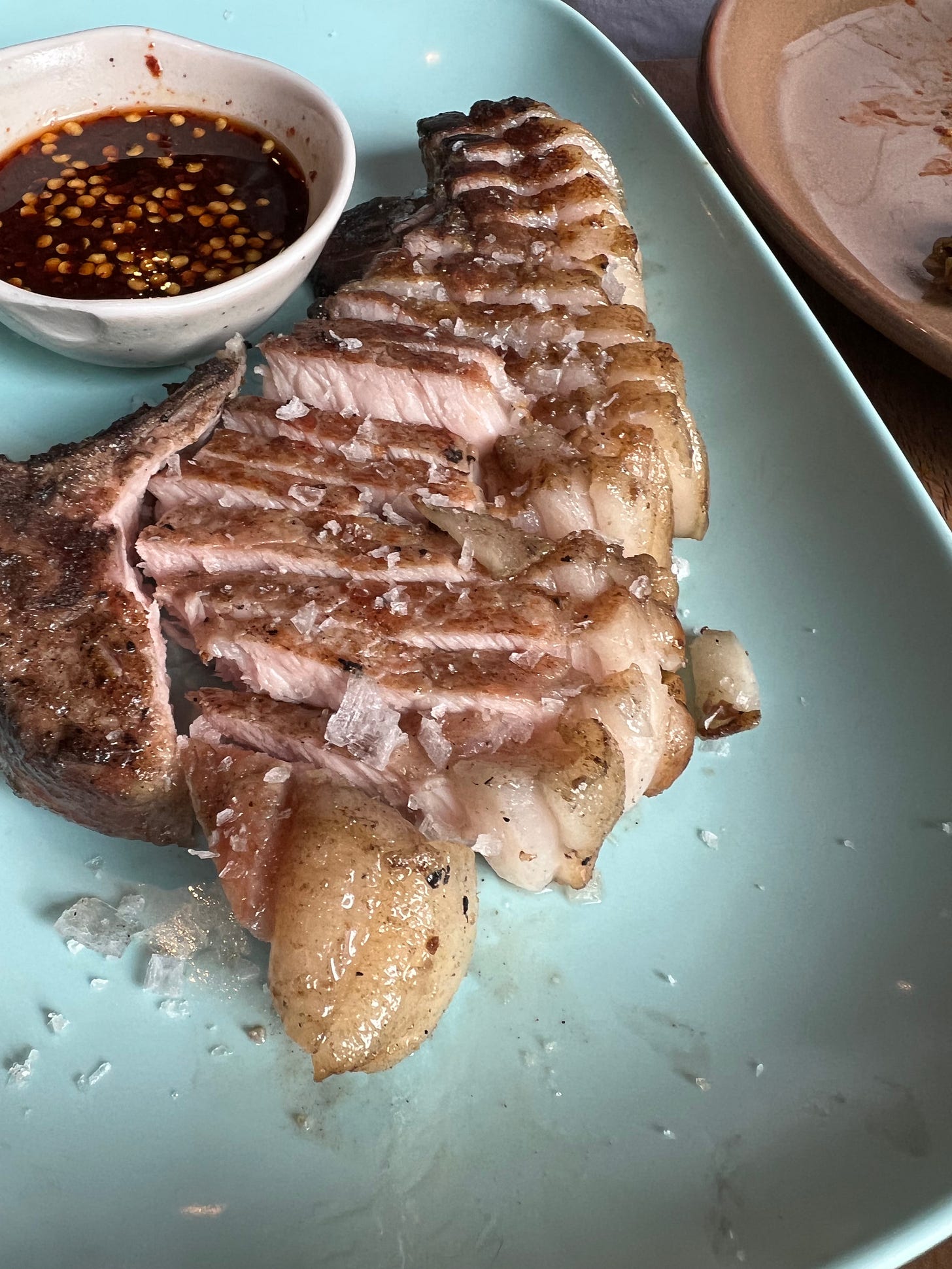
I’ve been thinking a lot about heirloom pork and how to cook it myself, lately, because at the lakehouse we have access to really good, fresh, local pork. The difference between this fatty, flavorful, juicy meat and your standard issue industrially raised pork is huge. It comes with a thick cap of fat that is so succulent when cooked that it’s proven hard for even fatphobes to resist.
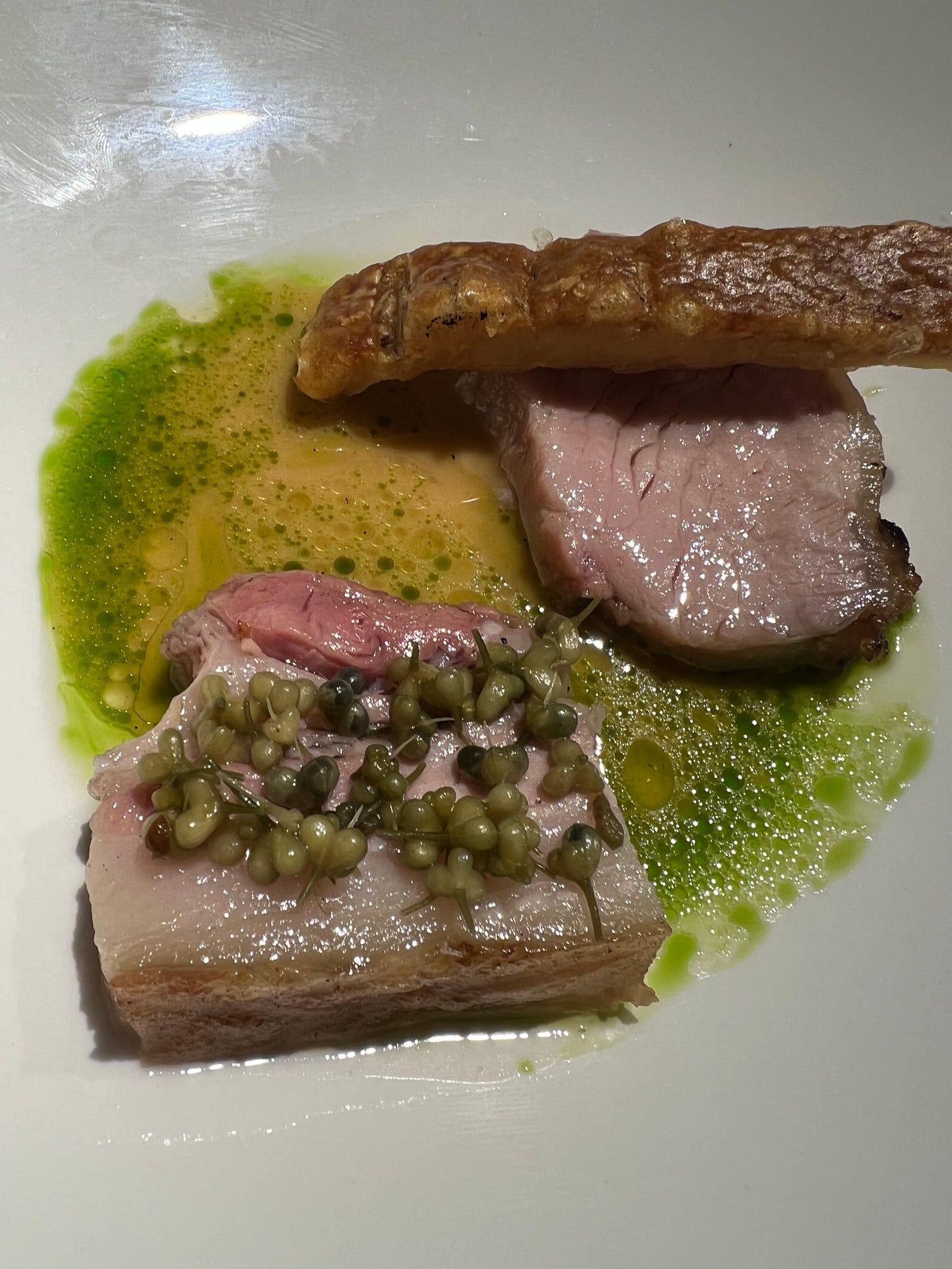
Pork, especially in chop form, is the one meat that I think inarguably benefits from brining. And even though our local chops are marbled with rich fat, I find brining enhances the flavor and texture. Don’t be afraid to brine. Unlike a turkey, brining pork is easy and quick. Some salt and sugar dissolved in water, a handful of aromatics, and a few hours in the fridge will improve your chops. More than one of our guests have declared pork chops at our table on Cayuga Lake the best they’ve ever had. I’m not bragging, I’m telling you to buy good meat and give it a soak.
TECHNIQUE: Grilled Pork Chops
(Serves 4 or 5)
¼ cup kosher salt
2 tablespoons sugar, white or brown
Water
Small handful of spices, such as fennel seeds, juniper berries, black peppercorns, spiceberries, star anise, smoked paprika, dried chilies, bay leaf
3 or 4 sprigs of fresh herbs, such as thyme, rosemary, chervil, marjoram, and/or parsley.
Some aromatics, such as a clove or two of garlic, peeled and split, a piece of onion, and/or celery leaves
4 thick-cut, heirloom-breed pork chops (between 3 and 4 pounds)
A favorite bbq sauce (optional)
Ice (optional to speed up the process)
Set to work the morning you intend to cook the chops for dinner. Begin by making your brine. The only challenge is waiting long enough for it to cool before you submerge the chops. I deploy ice to speed things up. In a small saucepan, place the salt, sugar, and about a 1 quart (4 cups) of water. Bring this to a boil and stir to dissolve the salt and sugar fully. Add the spices, herbs, and aromatics. Turn off the heat. You can add 2 or 3 more cups of water now and let the brine sit until it comes to room temperature, 2 or 3 hours, or add about a pound of ice (which produces roughly 2 cups water) and some water to chill it down more quickly.
When the brine is at room temperature (stick a finger in it to tell), place the chops in a container just big and deep enough to hold them in a single layer, more or less. A baking dish works well. Pour the cooled brine and all the flavorings over the chops. The brine needs to come to the top. If not, add some more water. Depending on how much more it takes, you may want to add an additional spoonful or salt and sugar, which will dissolve eventually, but I don’t usually think it necessary. Cover and refrigerate the chops for at least 4 hours or up to 8, but no more. Over-brined pork chops take on the texture of ham, which is not what we are after with fresh pork.
To cook, fire up a grill. Because of all the fat on these beauties, I find it easier not to grill them the entire way or the flareups will be hard to manage. Instead, I like to give them an initial sear over fire, then cook them with indirect heat, and finish them with a final touch of flame. On our gas grill at the lakehouse, the flame elements are divided widthwise into thirds, so I fire up the first and sometimes second elements, and keep the third one off for indirect, covered cooking,
Note that if it isn’t grilling season or you don’t have a grill, the chops are delicious seared in a hot cast-iron pan. Pat dry before cooking. Let them get nice and brown before flipping. They should take no more than 10 to 12 minutes total.
Remove the chops from the brine and pat dry with paper towels. Place the chops on an angle across the grates of the grill directly above the flames. Let sear or “mark” for 2 or 3 minutes. Then, using tongs, lift up the chops and without flipping, turn them 45° in the other direction to make cross marks. (This is something I learned as a grill cook in a fancy bistro in Toronto.) After a couple of minutes, flip the chops, and do the same sear and rotation on the second side. Then move the chops to the back of the grill, where there is no direct flame, close or cover the barbecue, and let roast for 5 to 7 minutes or so, depending on the thickness of your chops, until done. I like to cook my pork at this point to between 150°F and 155°F. Brush the chops with your favorite barbecue sauce, if using, not so much to flavor, but to glaze them. I turn them over onto the direct flame to sear for a few seconds. Brush the second side with sauce, and turn to sear again. Remove from the grill. Let sit for about 5 minutes with a piece of aluminum foil over them to retain their heat. And serve.
Got leftovers? Consider making the Thai-inspired salad from last week’s newsletter.



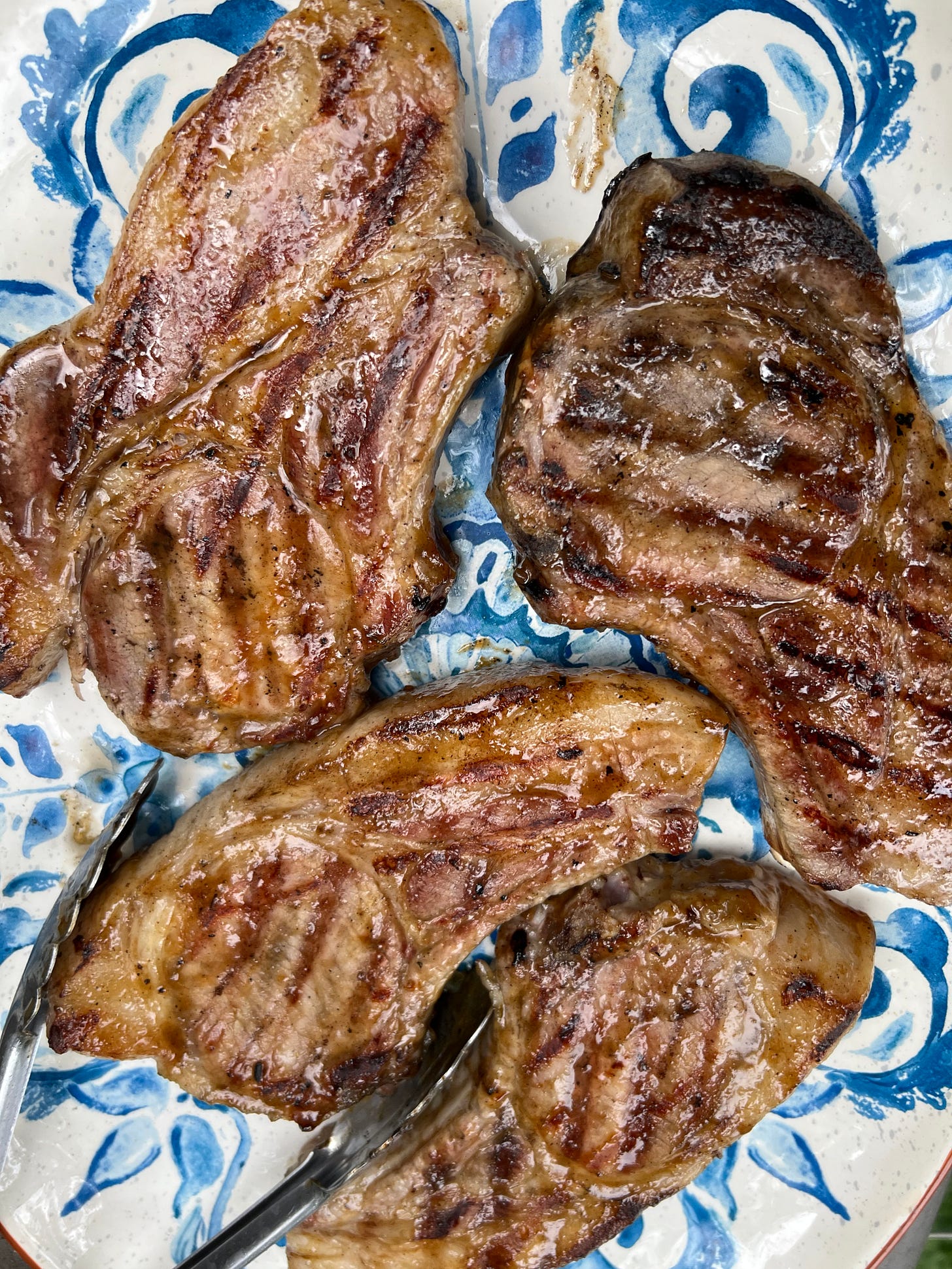
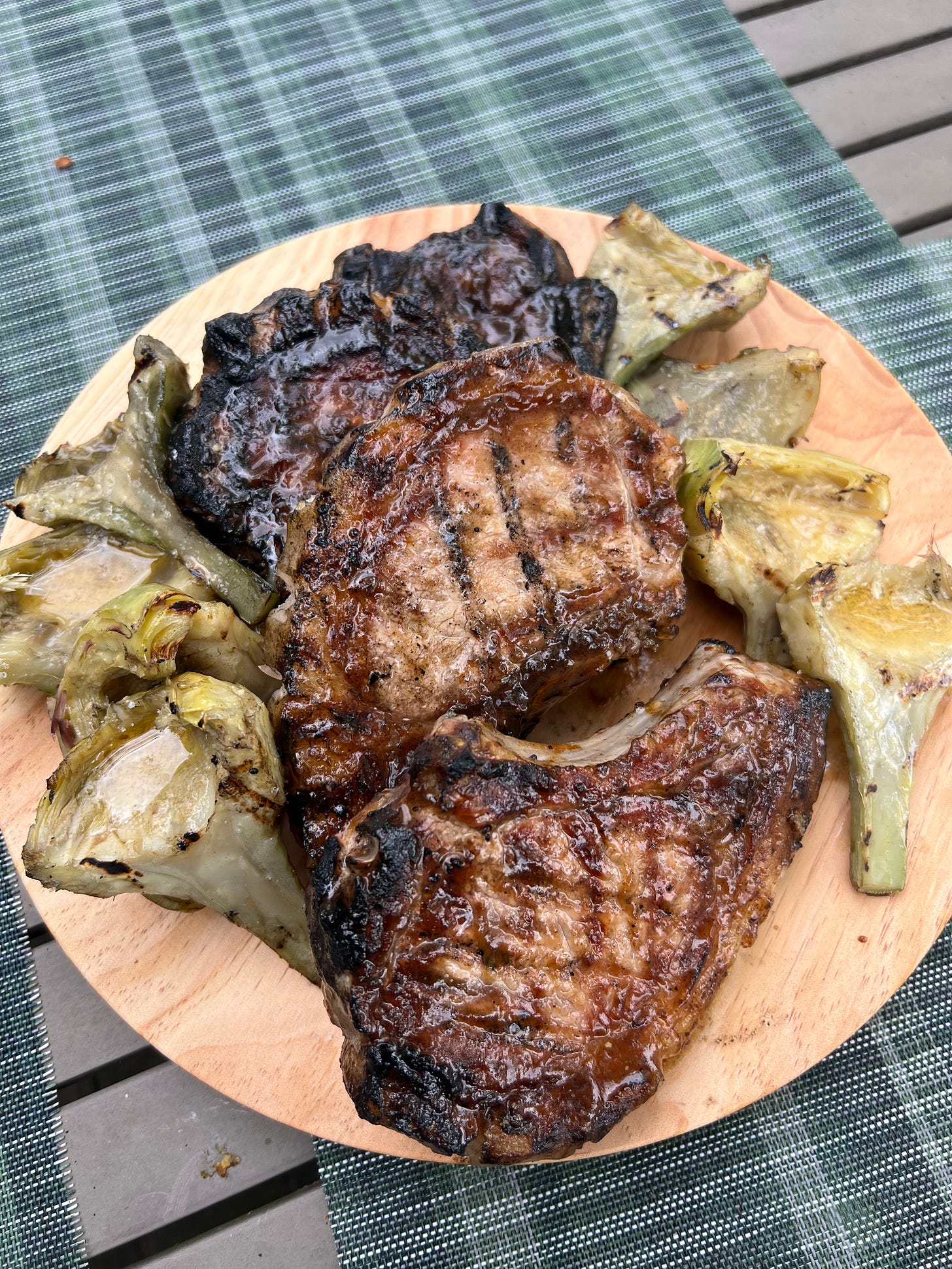
Such a thoughtful reflection on your trip to London and where you have come in your thinking about food, how we nourish ourselves and how the restaurant industry does contribute and where it could rethink a few aspects of how it operates. Thank you.